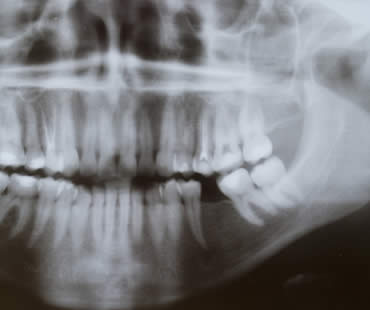
Sep 14, 2018 | Dental Topics 2, Teeth Whitening, Blog
Teeth whitening is the most popular cosmetic procedure that dentists perform today. It can have a dramatic effect on your smile at a smaller cost than other cosmetic procedures. You can whiten your teeth yourself using at-home techniques, but often professional whitening with your dentist’s help achieves the fastest and most effective results. Let’s examine the whitening options provided by most dentists to help you evaluate what might work for you.
Whitening at your dentist’s office:
The dentist applies a whitening product to your teeth containing higher percentages of hydrogen peroxide than what is available in at-home kits. Heat or light may be used also. This technique produces quick, uniform results, but it does sometimes cause temporary gum irritation or tooth sensitivity. This method is expensive, ranging between $500 to $1,200.
Home whitening supervised by your dentist:
A customized mouthpiece will be created by your dentist for you to fill at home with whitening gel, which contains a lower strength of hydrogen peroxide then the in-office gel. You wear the mouthpiece at home for several hours each day, and your dentist supervises the whitening with regular checkups. This method is convenient and less expensive at $300 to $500, but it produces slower results than in-office methods.
Repeating the process:
Whichever type of teeth whitening technique you might choose, remember that it isn’t a permanent repair to your teeth. You will need to repeat the process every year or two. The length of time between treatments will increase if you don’t smoke and avoid foods that are known to stain your teeth, such as coffee and red wine.
If you live in the Central Falls area contact us today

Jun 1, 2018 | Dental Topics 2, Veneers, Blog
One of the most common procedures in cosmetic dentistry today is dental veneers. Many types of problems can be remedied with veneers, such as teeth that are chipped, broken, gapped, misshapen, or discolored. A veneer is a very thin shell usually made of porcelain that is bonded to the fronts of teeth to hide flaws.
Benefits:
One of the best things about dental veneers is that they immediately transform your smile the minute they are placed. They are very natural-looking because the porcelain reflects light in the same way as real teeth. Discolored or stained teeth are erased by veneers that are created in the shade you choose. Porcelain resists stains so you no longer have to worry about discoloration. You get to keep your original teeth since veneers are attached directly to them. Veneers are not only an attractive choice, they are also strong and durable.
Procedure:
The process for getting dental veneers takes two or three appointments. At the first visit, you will have an examination and X-rays to learn if you are a good candidate for veneers. If this type of restoration is suitable for you and will help you achieve your goals, your dentist can customize your smile based on your facial features, coloring, complexion, and other characteristics. A mold will be taken of your mouth and sent to a dental laboratory for your veneers to be made. When they are ready in about a week, you will return to the dental office to have them attached to check for things like fit and color. The veneers will then be permanently bonded to your teeth and final modifications will be completed.
Care:
Your normal oral hygiene routine can be continued, including gentle regular brushing with a soft toothbrush and daily flossing. Regular dental checkups every six months should be maintained for checkups and cleanings. Avoid chewing or biting on hard items so that your veneers will not chip or break. If you follow these guidelines, your veneers should last a very long time.
We look forward to seeing you in our Central Falls dental office

Jul 4, 2024 | Dental Topics 2, Wisdom Teeth, Blog
Tooth pain can be one of the most uncomfortable types of pain there is. It can make your whole jaw and head ache, interfere with eating, and cause your teeth to be more sensitive. One common reason for a toothache is your wisdom teeth, which are the molars in the very back of your mouth that develop last. Sometimes they don’t even erupt, but they can still be there under your gums causing trouble. If you experience pain related to wisdom teeth, here are some suggestions.
Make an appointment to see your dentist as soon as possible. This way you can find out for sure if your wisdom teeth are to blame for your pain, and decide the best treatment plan for your situation. A dentist examination, which may include x-rays, is the best way to determine exactly what’s going on with your teeth. You may not even be able to see your wisdom teeth, but they might be growing improperly under your gums. Often, wisdom teeth need to be extracted to avoid continued pain or worsening condition. Luckily, wisdom teeth extraction is a common procedure that your dentist or oral surgeon is very familiar with, and can provide you with great treatment that will end up relieving your pain.
While waiting for your dental appointment, try applying an over-the-counter numbing gel such as Oragel. This may help relieve your pain at least for a short time. Also, taking non-prescription pain medicines should help. Acetaminophen and ibuprofen are both good choices to try, especially to subdue the pain when you want to sleep.
Remember that prevention is often the best way to avoid dental pain. Brush your teeth at least twice a day, and floss every day. See your dentist regularly for checkups, because problems with wisdom teeth can sometimes be spotted before you ever begin to feel any pain associated with them. This allows you to deal with the problem before you have to endure a toothache.
We treat patients from Central Falls and the surrounding area

Jan 25, 2019 | Dental Topics 2, Veneers, Blog
Porcelain veneers hide your teeth’s imperfections so that you are happier with your smile. They are very thin shells that are adhered onto the fronts of your teeth to permanently give you the look you want. Veneers can make your teeth look straighter, whiter, and better than ever before.
How do you know if veneers might be right for you? Here are some things to consider when deciding whether veneers can help your smile:
- You would like to alter your teeth permanently.
- You want to change the color of your teeth.
- Your front teeth are broken or chipped.
- Your teeth are not evenly spaced.
- Your teeth are not aligned straight.
- You’d like to improve your smile quickly.
- You don’t want to affect much of your natural teeth.
- You would like a brighter smile.
If any of these statements describe your situation, then porcelain veneers might be a good choice for you. Of course the first thing you need to do is consult a dentist for advice. Many times, the ideal person for the job is a cosmetic dentist. This type of specialist focuses on performing procedures to help patients achieve their cosmetic smile goals. Veneers is one such treatment that has grown in popularity because it transforms smiles in just a few short appointments, and it is a painless approach.
When you visit a cosmetic dentist, you will be able to describe what bothers you about your teeth and learn if you are a good candidate for veneers. If so, the dentist will explain the simple process of having your porcelain veneers custom-made in a lab for you. Your natural teeth will undergo some minor preparation, and when your veneers are ready the dentist will securely attach them to your teeth. Then you will be set to show off your new smile!
Schedule your appointment at our Central Falls dental office

Apr 2, 2021 | Dental Topics 2, Veneers, Blog
Tooth stains, chips, cracks, and discolorations can keep you from letting others see your teeth. If you are self-conscious about your smile, then dental veneers may be the answer for you. Veneers can correct a variety of imperfections and give you a natural, beautiful smile.
What are dental veneers?:
Made from tooth-colored porcelain, veneers are attached to the front of your natural teeth. They feel just like the rest of your teeth, and are durable and do not irritate your gums. Since porcelain is resistant to stains, you’re able to eat and drink as you wish. Good oral hygiene helps keep veneers and your natural teeth strong and healthy.
What are the benefits of getting veneers?:
There’s a reason that veneers are one of the most popular options in cosmetic dentistry. They provide a solution to many problems and can dramatically improve the appearance of your smile. Veneers are the answer for tough stains or discolorations that can’t be repaired by teeth whitening. They can also make your teeth look straight and even. Veneers provide an answer for chipped or broken teeth too.
Are there any disadvantages?:
The main thing to remember is that your original tooth might need to be reshaped to a smaller size and shape to allow the new, thin coating of the veneer to be placed over it. The coating will make your tooth look like a normal, perfectly shaped tooth. However, if the veneer is ever removed, it would need to be replaced to keep your smile looking nice. Dental veneers are a life-long solution to creating your best smile.
Our dental office is located in Central Falls

Nov 8, 2019 | Dental Topics 2, Veneers, Blog
Cosmetic problems with your teeth can make it embarrassing to show your smile. Thanks to dental veneers, you can erase flaws and create a brand new look that will make you want to show off your pearly whites instead of hiding them.
Veneers are very thin shells that are usually made of porcelain. They are custom-made to fit right on top of the fronts of your teeth. The veneers are securely bonded in place so that you can feel confident and comfortable with your smile. The porcelain is matched to the same color as your natural teeth, or a few shades brighter if you’d like to whiten your smile. This material reflects light in the same way that real teeth do, so that others can’t even tell the veneers are there. Porcelain is also very durable, and will not stain like real teeth.
Dental veneers hide many different kinds of problems with your teeth. Some of the most common reasons that people choose to recreate their smiles with veneers include:
- Teeth damaged from injury or decay, including chips and cracks
- Unsightly gaps between teeth
- Stains or discoloration that isn’t corrected with teeth whitening
- Misshapen teeth that do not match the rest of your smile
Veneers are a quick and painless solution. Your natural teeth will be slightly prepared so that the veneers attach properly, but the process is not uncomfortable. Once your veneers are placed, you can expect them to last years without needing to replace them. Maintenance involves routine brushing and flossing just as you would normally, and keeping regular checkups with your dentist.
We look forward to seeing you in our Central Falls dental office








